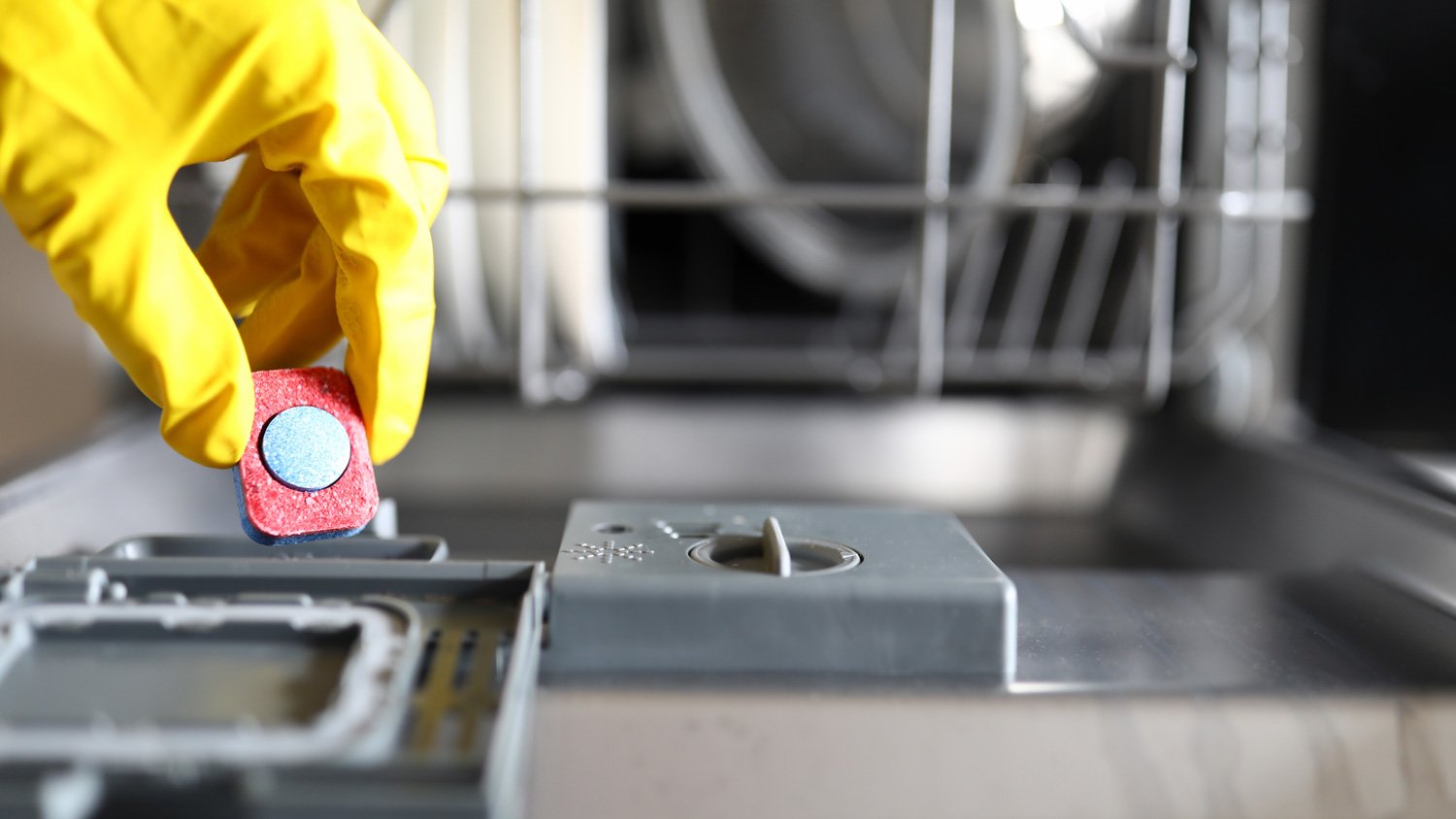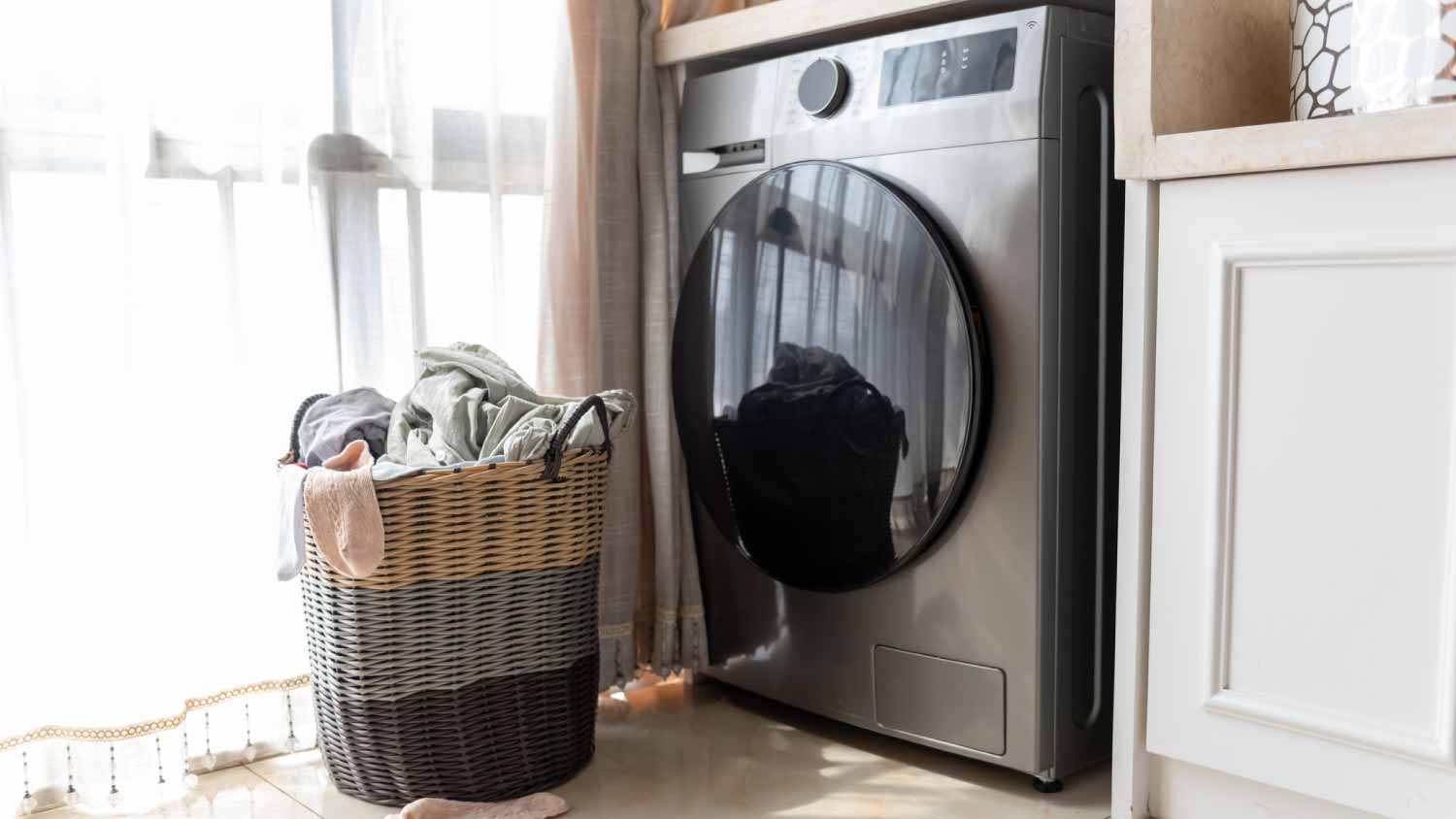What Is a Portable Dishwasher?
If you’re in the market for a dishwasher that won’t ruin your beautiful cabinetry or devour your tiny kitchen space, a portable dishwasher just may fill the bill


When it comes to a fun way to fill the evening hours, doing the dishes probably ranks pretty low on the list. But if you have a tiny kitchen, or you simply don’t want to demolish your custom cabinetry, the idea of installing a traditional built-in dishwasher may send chills down your spine. But there’s hope! A portable dishwasher can give you the convenience and performance you want without overwhelming your kitchen space.
What Is a Portable Dishwasher?
A portable dishwasher is exactly what the name implies. Unlike built-in dishwashers, drawer dishwashers, and countertop dishwashers, portables are perfect for mobility. Most sit on casters that allow you to easily roll it into the kitchen when you need it and store it away again when you finish.
To use a portable dishwasher, you simply roll the appliance close to the sink, attach the hose to your kitchen faucet, and plug the appliance into an outlet. From there, you’re ready to load it up and let it do its thing.
Benefits of a Portable Dishwasher
There are lots of benefits to a portable dishwasher, some of which may surprise you.
They Work in Almost Any Space
Some kitchens, especially in older homes, can’t accept a built-in dishwasher without modifications to the cabinetry or plumbing. But with a portable dishwasher, you get the perks of a built-in without having to sacrifice precious kitchen space or your gorgeous cabinetry.
Saves Your Counter Space—and Adds a Bit More!
Even if you’re settling for the most compact of built-ins or countertop dishwashers, you will still probably lose at least 18 inches of cabinet space. But with a portable dishwasher, you’re not only going to save all your cabinet space, but you will add counter space for as long as you’re using the machine. Most portable dishwashers have a butcher block top, or the equivalent, making it a handy and durable kitchen workspace.
Saves You Money
If you’re looking to economize, portable dishwashers are also a great option. They tend to cost quite a bit less on average than all but the most basic built-in, drawer, or countertop dishwashers. You can expect to pay between $390 and $690. On the other hand, built-in and drawer dishwashers can cost around $1000 at midrange and $2000 at the high-end.
Not only that, but portable dishwashers are often very energy-efficient; they only consume water and electricity when in use, unlike many of the always-on, energy-sucking appliances throughout your home. Energy Star-rated appliances, for instance, reduce energy consumption by design and cut your energy costs.
Good Performance for Small Households
If you have a small household that doesn’t produce a massive amount of dirty dishes each day, then a portable dishwasher can be a better option than traditional built-ins. Because portables can handle small loads, you’ll get thorough cleaning without wasting space, water, or energy.
Drawbacks of a Portable Dishwasher

For all the benefits of a portable dishwasher, there are some drawbacks, especially if you have a large family and want a large-capacity appliance with lots of nifty features. Here are some of the possible disadvantages of a portable dishwasher.
Not as Many Options
Portable dishwashers aren’t as common as built-ins. That means you’re likely not going to have nearly as many styles or features to choose from aside from your basic, no-frills, compact appliance. In most cases, you’ll only have one or two options per brand for a portable dishwasher.
You May Sacrifice Durability for Portability
Portable dishwashers can be less durable than static appliances because the very portability that makes them so convenient also makes them vulnerable to wear and tear. Because you’ll move them around and hook and unhook them frequently, you not only have a higher risk of damaging the machine but imparting inevitable wear on the appliance’s connection points, including the fill and drain hoses and the power cable.
You’ll Have to Live With a Bit of Noise
Portable dishwashers usually make quite a bit more noise than their built-in counterparts. That’s because built-ins include insulated surfaces that can make even the most punishing loads run as quietly as a whisper. You don’t have such a buffer with portables, so you’ll hear every bump, swoosh, and hiss of the wash, rinse, and dry cycles.
Plus, most portables use plastic tubs rather than stainless steel to make them lighter and more portable. But plastic tubs have higher noise levels than stainless steel tubs. So, when you combine that with the lack of sound-resistant insulation, you may be in for quite a symphony—or cacophony.
No More Large Loads
To maintain their lightweight and compact size, portable dishwashers have a limited load capacity. So your family may either need to get thrifty with the number of dishes they dirty or plan to run multiple loads a day.
Tips for Using a Portable Dishwasher
1. Run Hot Tap Water Before Connecting the Hose
It’s a good idea to run hot tap water before you connect the hose. This way, your dishwasher will have instant hot water when you turn it on, and that will help dissolve soap, break down food residue, and produce a cleaner clean overall.
2. Use a Rinse Aid
Whether you have a portable dishwasher or a built-in, a rinse aid is always a good idea, especially if your dishwasher has a plastic tub. These help in the rinse cycle, clearing away any detergent residue, and in the drying cycle by preventing water spots.
3. Do Basic Maintenance
Your portable dishwasher does a lot of heavy work for your family. So, you’ll want to keep it working in tip-top shape through a bit of TLC. Your regular maintenance can be pretty simple. For instance, just reaching in and spinning the spray arms to check for obstructions will help ensure your machine is cleaning properly.
If you find an obstruction, you will need to do a bit of extra cleaning. That should include removing debris from the filter and cleaning the seals periodically to prevent grime from building up.



.jpg?impolicy=leadImage)

- Appliance Repair Companies
- Washing Machine Repair
- Dryer Repair
- Refrigerator Repair
- Dishwasher Repair
- Oven Repair
- Wood & Pellet Stove Repair
- Freezer Repair Services
- Wood Stove Services
- Gas Stove Repair
- Emergency Appliance Repair Companies
- Ice Maker Repair
- Gas Appliance Repair
- GE Appliance Repair
- GE Refrigerator Repair
- GE Dryer Repair
- GE Dishwasher Repair
- GE Washing Machine Repair
- Samsung Appliance Repair
- Samsung Refrigerator Repair
- Samsung Dryer Repair
- Samsung Washer Repair
- Samsung Dishwasher Repair
- Samsung Oven Repair
- Whirlpool Repair
- Whirlpool Refrigerator Repair
- Whirlpool Washer Repair
- Whirlpool Dryer Repair
- Whirlpool Oven Repair
- Maytag Appliance Repair
- Maytag Refrigerator Repair
- Maytag Washer Repair
- Maytag Dryer Repair
- Maytag Dishwasher Repair
- Kitchenaid Appliance Repair
- Kitchenaid Oven Repair
- Kitchenaid Refrigerator Repair
- Kenmore Appliance Repair
- Kenmore Dishwasher Repair
- Kenmore Washer Repair
- Kenmore Dryer Repair
- LG Refrigerator Repair
- Bosch Appliance Repair
- Kenmore Refrigerator Repair
- LG Appliance Repair Services
- GE Microwave Repair
- Electrolux Appliance Repair
- Electrolux Washer Repair
- Kitchenaid Dishwasher Repair Services
- Wood Stove Inspection
- Dishwasher Installation
- Trash Compactor Repair
- 5 Types of Dishwashers and How to Choose One For Your Home
- Dishwasher vs. Handwashing: Cost, Water, Energy, and More
- Do Dishwashers Use Hot Water?
- Why Your Dishwasher Is Not Filling Up With Water and What to Do
- How to Clean a Moldy Dishwasher
- Why Your Dishwasher Won’t Turn On and What to Do About It
- Do Dishwashers Save Water? Why You Should Wash Your Hands of Handwashing
- Parts of a Dishwasher: Learn What They Are and How They Work
- What Is a Dishwasher Air Gap?
- What’s the Difference Between a Portable AC and a Window AC Unit?









